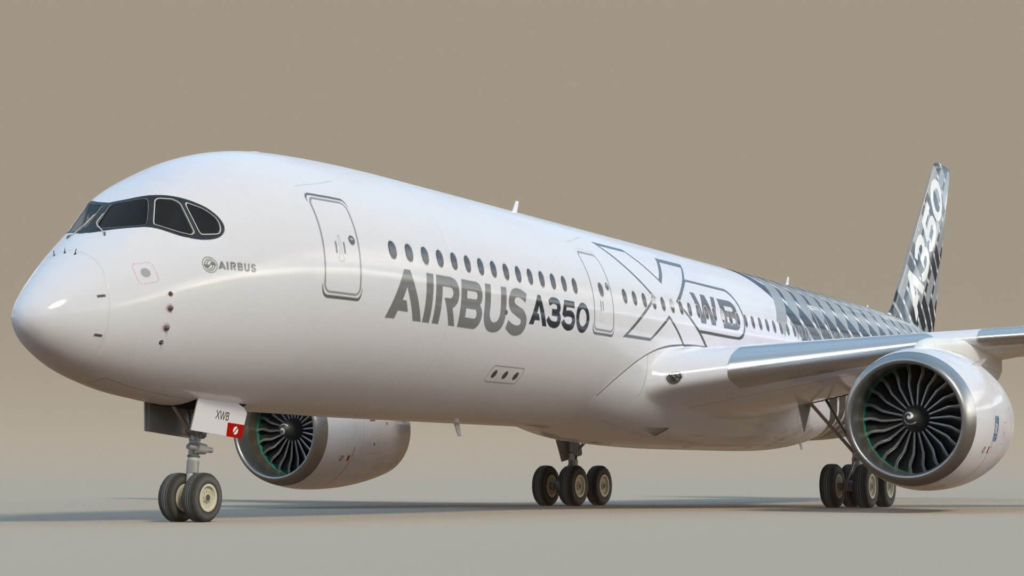
The Airbus A350 has emerged as a game-changer in the aviation industry, offering a level of innovation and performance that is revolutionizing the way passengers experience long-haul flights. Whether it’s the superior fuel efficiency, the quiet cabin, or the advanced technology that makes this aircraft stand out, the A350 is more than just a plane; it’s a symbol of the future of air travel. In this article, we will explore the features, benefits, and future of the Airbus A350 and how it is setting new standards for both airlines and passengers.
Introduction to the Airbus A350
The Airbus A350 is a family of long-range, wide-body, twin-engine airliners developed by the European aerospace company Airbus. The aircraft is designed to provide superior comfort, cost-effectiveness, and efficiency for airlines and passengers alike. The A350 was developed to compete with Boeing’s 787 Dreamliner and is known for its cutting-edge technology, environmentally-friendly design, and passenger-centric features.
The Airbus A350 is available in two main variants: the A350-900 and the larger A350-1000. The A350-900 is the more common version, while the A350-1000 is designed for longer routes and carries more passengers.

Key Features of the Airbus A350
Also Read: Doodflix: What Is It and Why People Are Talking About It
- Efficient Fuel Consumption
One of the standout features of the Airbus A350 is its fuel efficiency. The aircraft incorporates advanced materials, such as carbon fiber-reinforced polymer, which reduce its weight and make it more fuel-efficient than its predecessors. This allows airlines to reduce operating costs while also reducing their carbon footprint. The A350 consumes 25% less fuel than older aircraft like the A340, making it a highly sustainable option for long-haul flights. - Next-Generation Technology
The A350 is packed with advanced technology that sets it apart from other aircraft. It features the latest fly-by-wire systems, which improve the aircraft’s performance and handling. Additionally, the A350 is equipped with advanced avionics and navigation systems, providing pilots with a more intuitive and streamlined experience. - Passenger Comfort
One of the biggest selling points of the A350 is its focus on passenger comfort. The cabin is designed to offer a more relaxing and enjoyable experience for long-haul travelers. The aircraft features wider seats, larger windows, and improved lighting, which can adjust to mimic natural daylight, helping passengers maintain their circadian rhythm. The cabin is also quieter than most other aircraft, reducing noise levels significantly. - Improved Aerodynamics
The Airbus A350 is designed with cutting-edge aerodynamics that contribute to its fuel efficiency and performance. The wings of the A350 feature advanced designs that improve lift and reduce drag, further contributing to the aircraft’s impressive efficiency. The wide, flexible wings also allow the A350 to fly at higher altitudes, where the air is thinner, resulting in reduced fuel consumption and emissions. - Environmentally Friendly
With increasing pressure on the aviation industry to reduce its environmental impact, the A350 has been designed with sustainability in mind. The aircraft is equipped with fuel-efficient engines that help reduce carbon emissions and noise pollution. Additionally, the materials used in the construction of the A350 are more environmentally friendly, further reducing the aircraft’s carbon footprint.
The Airbus A350-900 and A350-1000: What’s the Difference?
The Airbus A350 family includes the A350-900 and the A350-1000, each designed for different purposes. Let’s break down the key differences between the two variants:
A350-900
The A350-900 is the base model of the A350 family and is the most widely used. It can carry up to 440 passengers in a two-class configuration and has a range of approximately 8,000 nautical miles, making it ideal for long-haul routes. The A350-900 has been adopted by several major airlines worldwide, including Singapore Airlines, Qatar Airways, and Delta Airlines.
A350-1000
The A350-1000 is a larger version of the A350-900, capable of carrying up to 440 passengers in a more spacious layout. It is designed for even longer routes and offers superior fuel efficiency, reduced carbon emissions, and a quieter cabin. The A350-1000 is primarily aimed at airlines that need to serve high-density routes and require more seating capacity. The aircraft’s range is slightly shorter than the A350-900, at around 7,750 nautical miles, but it still offers excellent performance for long-haul flights.
Also Read: Delta Flight DL275 Diverted LAX: What Happened, Why, and What You Need to Know
Performance and Efficiency
The Airbus A350 has been designed to perform well in a wide range of conditions while offering superior efficiency. The aircraft’s fuel efficiency is a key factor in its appeal, especially in today’s environmentally-conscious world. Its engines use advanced technologies to reduce fuel consumption while maintaining high performance. Airlines can save millions of dollars annually by operating the A350-900 and A350-1000, both of which are more cost-effective compared to older aircraft.
The A350’s advanced aerodynamics and lightweight construction help reduce drag, which further enhances fuel efficiency. Airlines operating the A350 report that it can save up to 25% in fuel costs compared to older models, which makes it a great option for reducing operating costs and improving profitability.
Future of the Airbus A350
The Airbus A350 represents the future of air travel, combining sustainability, comfort, and advanced technology to deliver an unmatched flying experience. With its fuel-efficient engines, quiet cabins, and environmentally-friendly features, the A350 is poised to dominate the long-haul flight market for years to come. It is already being adopted by several major airlines, and the aircraft’s popularity is expected to grow in the coming years as airlines look for ways to reduce operating costs and improve passenger satisfaction.
The A350 will likely remain at the forefront of the aviation industry, setting the standard for what modern airliners should look like. With ongoing improvements in technology and performance, the A350 is set to remain one of the most efficient and environmentally-friendly options for long-haul flights.
Also Raed: Ankwave: A Game-Changer in Connectivity Solutions
FAQ about the Airbus A350
What is the Airbus A350 known for?
The Airbus A350 is known for its fuel efficiency, advanced technology, and passenger comfort. It is designed to be an environmentally-friendly and cost-effective option for long-haul flights.
How many passengers can the Airbus A350-900 carry?
The A350-900 can carry up to 440 passengers in a two-class configuration.
What is the range of the Airbus A350?
The A350-900 has a range of approximately 8,000 nautical miles, while the larger A350-1000 has a range of around 7,750 nautical miles.
What is the difference between the A350-900 and A350-1000?
The A350-1000 is a larger version of the A350-900, with a higher seating capacity and a slightly shorter range.
Why is the Airbus A350 considered environmentally friendly?
The A350 is considered environmentally friendly due to its fuel-efficient engines, reduced carbon emissions, and quieter operation, making it a sustainable choice for airlines.
Conclusion
The Airbus A350 is setting new benchmarks in the aviation industry. With its fuel efficiency, advanced technology, and passenger-centric features, the A350 is a true game-changer in long-haul flight. Whether it’s the comfort it offers passengers or the savings it provides to airlines, the A350 is poised to shape the future of air travel. As airlines continue to adopt the A350, this remarkable aircraft will continue to push the boundaries of innovation in aviation, offering a new era of flying that is sustainable, efficient, and passenger-friendly.



